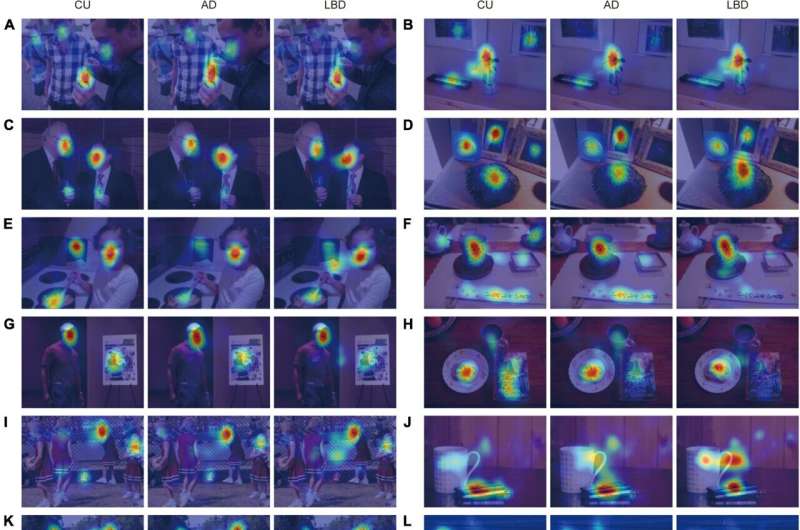This article has been reviewed according to Science X's editorial process and policies. Editors have highlighted the following attributes while ensuring the content's credibility:
fact-checked
peer-reviewed publication
trusted source
proofread
AI-based diagnostic tool differentiates dementia diseases by analysis of eye movement patterns

Eye movements can not only reflect impaired visual attention, but also influence cognitive processing and a wide range of daily activities. Hence, a better understanding of how patients with dementia visually perceive the real world is critically important to mitigate the widespread impact of impaired visual attention on their quality of life.
Furthermore, identifying disease-specific patterns of altered eye movement will provide behavioral biomarkers for differentiating dementia subtypes with similar clinical manifestations. However, previous studies have used structured tasks or restricted stimuli, which have limited the insights into how eye movements alter in and vary between different dementias in daily life.
In a study appearing in Frontiers in Neuroscience, researchers collected spontaneous viewing behaviors toward an exhaustive set of stimuli (200 images of complex naturalistic scenes containing 1,533 objects with annotations about their semantic attributes, such as faces, emotions, text, and human-made objects) from patients with Alzheimer's disease (AD) and dementia with Lewy bodies (DLB), the two most common subtypes of late-onset neurodegenerative dementias.
Through comprehensive characterization using a computational visual attention model, for the first time, the team showed disease-specific altered patterns of eye movement in response to complex scenes in patients with AD and DLB. They used these altered patterns to develop an AI-based screening tool capable of reliably identifying and differentiating patients with these two dementia forms.
These findings may assist us in comprehending real-world viewing behaviors in patients with dementia to mitigate the widespread impact of impaired visual attention on their daily activities. Additionally, the language-free, instruction-free method proposed here for the objective characterization of free-viewing behaviors can support the screening and differentiation of dementia subtypes. This will greatly facilitate dementia research on a global level involving diverse populations with different languages or cognitive impairments that may affect the understanding of task instructions.
More information: Yasunori Yamada et al, Distinct eye movement patterns to complex scenes in Alzheimer's disease and Lewy body disease, Frontiers in Neuroscience (2024). DOI: 10.3389/fnins.2024.1333894



















